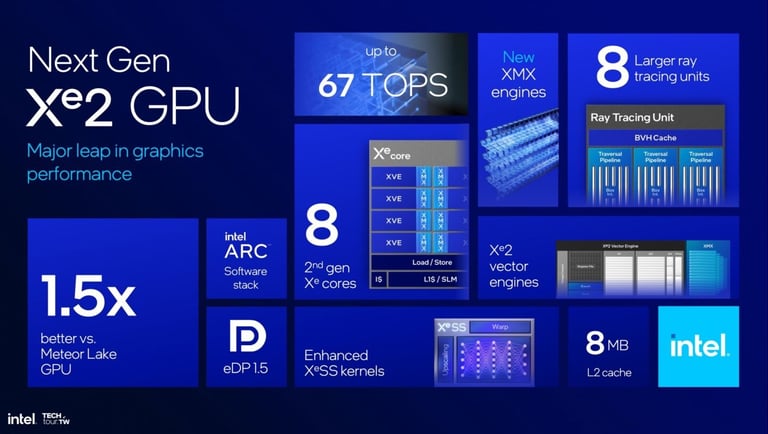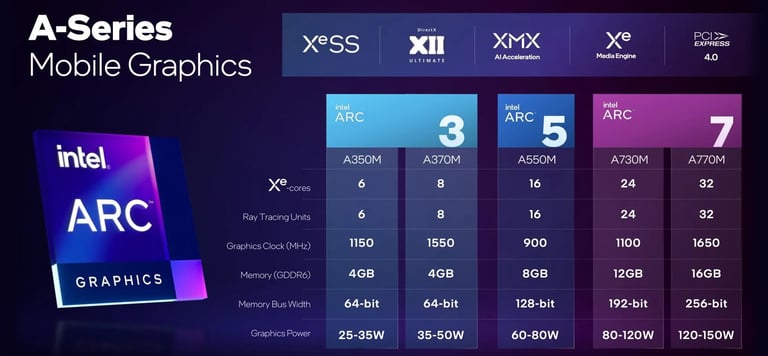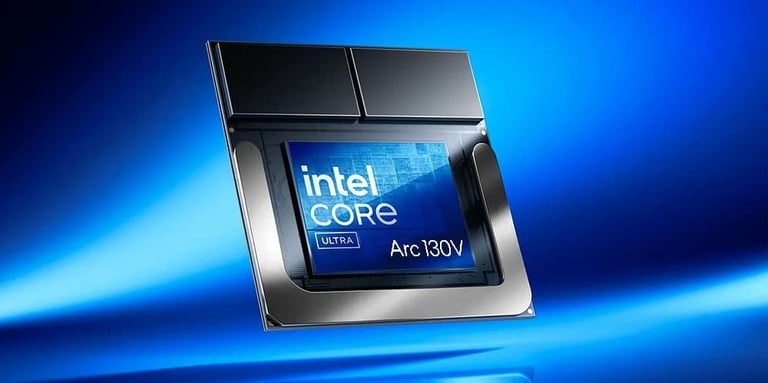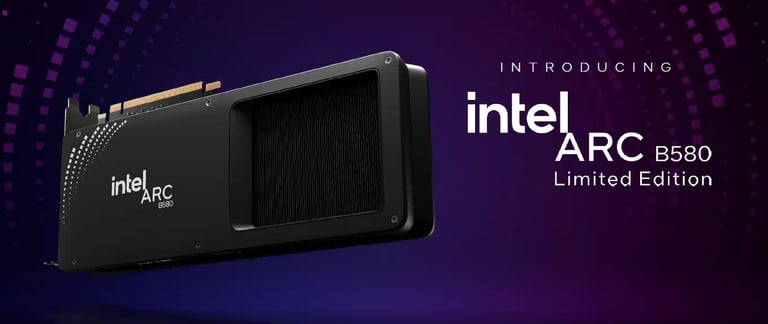
Demystification of disinformation on Intel Arc GPUs: the truth behind performance


Introduction to disinformation on Intel Arc GPUs
In the current technological landscape, Intel ARC GPUs arouse growing interest, but also a certain confusion. Disinformation surrounding these graphic units is fueled by sometimes unfounded allegations concerning their performance. Many specialized sites and online influences have shared criticism and comparisons that may not reflect the reality of the Intel ARC GPU capacities. Therefore, it is essential to understand where this wrong information comes from and how they shape the perception of consumers.
One of the main reasons why false allegations on Intel Arc GPUs can circulate often lies in a biased interpretation of performance data. Some comparisons can use benchmarks that do not take into account the different scenarios of use or the particularities of GPU architectures. This lack of rigor in the evaluation can give rise to hasty conclusions, thus distorting the reality of the performance of Intel GPUs.
Another factor to consider is the current trend on social networks and discussion forums, where unsuccessful opinions can quickly gain popularity. Users can be influenced by sensational content that does not take into account the context of GPU performance. This rapid propagation of disinformation can create a negative and unjustified perception of Intel Arc products, thus removing consumers from the true assets of these GPUS.
It is crucial for consumers to adopt a critical approach to the various information present online. By inquire about reliable sources and by consulting independent performance tests, it is possible to forge an enlightened opinion on the GPU Inc. This not only makes it possible to precisely assess their potential, but also to make informed purchase choices.
Comparison of performance of IgPu Intel and AMD
In the field of IT, the performance of integrated graphic processing units (IGPU) has become essential for many users. The IGPUs of Intel, in particular the 155h model, are often put into competition with those of AMD, such as the 680m, 780m and 890m. Recent tests have shown that Intel IGPUs clearly surpass their AMD counterparts in terms of power and efficiency.
Benchmarks' results show a significant difference in various graphic and calculation applications. For example, during performance tests on popular video games and content creation applications, the 155h displayed graphic capacities much higher than those of the 680m IGPU of AMD. This can be assigned to several factors, including the optimization of Intel pilots, which are regularly updated to guarantee maximum performance.
In addition, the bios adjustments, such as the deactivation of the Intel VT, allowed these IGPUs to release more treatment resources, thus helping to improve their overall performance. Performance analyzes also reveal that Intel architecture allows more efficient memory management, which results in smoother graphics and higher reactivity during multitasking tasks.
It is essential to note that users seeking the best value for money in their systems should consider Intel IGPUs, especially with regard to their technical advance. As competition between Intel and AMD continues to grow, the performance of Intel IGPUs as the 155h clearly demonstrate their current superiority on the market, providing advantages not only in terms of raw power, but also in software and compatibility of games.
The recent advances in Intel Arc pilots
In the incessant quest to optimize the performance of Intel GPUs, the company recently deployed several significant updates of its pilots. These improvements have been designed to maximize the efficiency of graphics cards, thus offering users new performance levels. The new pilots' iterations have been documented to allow impressive gains, sometimes reaching double the performance of a competing GPU like model 890.
Recent updates include targeted optimizations for popular games, guaranteeing fluid rendering and better resource management. In addition, Intel has been able to integrate specific adjustments to the architecture of its ARC GPUs, which allows increased compatibility with various applications and environments. These initiatives demonstrate a strong commitment to users, ensuring that their investments in hardware are supported by a constant evolution of software.
One crucial aspect of these advances lies in the regular update of pilots. It is essential that users ensure that their installation is up to date to benefit from the latest improvements. Indeed, outdated drivers can not only limit performance, but also cause compatibility problems. Intel has also set up an automatic update mechanism, thus facilitating the process for users. This step forward ensures that the equipment maximizes its potential, offering an optimal user experience.
Ultimately, recent advances in Intel Arc pilots are not only technical; They respond to a need for innovation and adaptation in the face of a constantly evolving sector. Thanks to these efforts, users can now expect significantly improved performance, stressing the crucial importance of keeping the pilots up to date to get the most out of their GPU.
Ray Tracing and the performance of Intel architectures against Nvidia
Ray Tracing, a revolutionary technology in graphic rendering, has redefined the standards of video game performance and has been largely adopted by competing brands. Intel Arc graphic architectures, although relatively new on the market, have remarkable capacities that deserve to be highlighted, especially when compared to Nvidia GPUs, often considered leaders in this area.
Intel Arc GPUs were designed with an innovative architecture that incorporates dedicated Ray Tracing units, allowing them to treat shadows and reflections more efficiently. Although most consumers immediately associate Ray Tracing in Nvidia, it is essential to recognize that the performance of Intel GPUs in optimal conditions can sometimes compete, even surpass those of their Nvidia counterparts. For example, in games optimized for Ray Tracing technology, users report that Intel GPUs manage to maintain competitive frame rates, even high resolutions.
In addition, the optimization of the software and the pilots also played a crucial role in the performance rise of Inc GPUs. The continuous improvement of drivers and collaborations with game developers are factors that allow users to benefit from Ray Tracing capabilities of Intel GPUs. This thwarts the preconceived idea that Nvidia is indisputably the best choice for Ray Tracing. Users should therefore pay increased attention not only to brands, but also to the specific performance of each model and the use scenarios.
In conclusion, competition on the GPU market is evolving, and consumers must be willing to assess and reconsider their choices in terms of graphic performance, taking into account the advances made by Intel in the field of Ray Tracing. This could open the way to a future where users can benefit from optimal graphics performance, whatever their brand choices.






